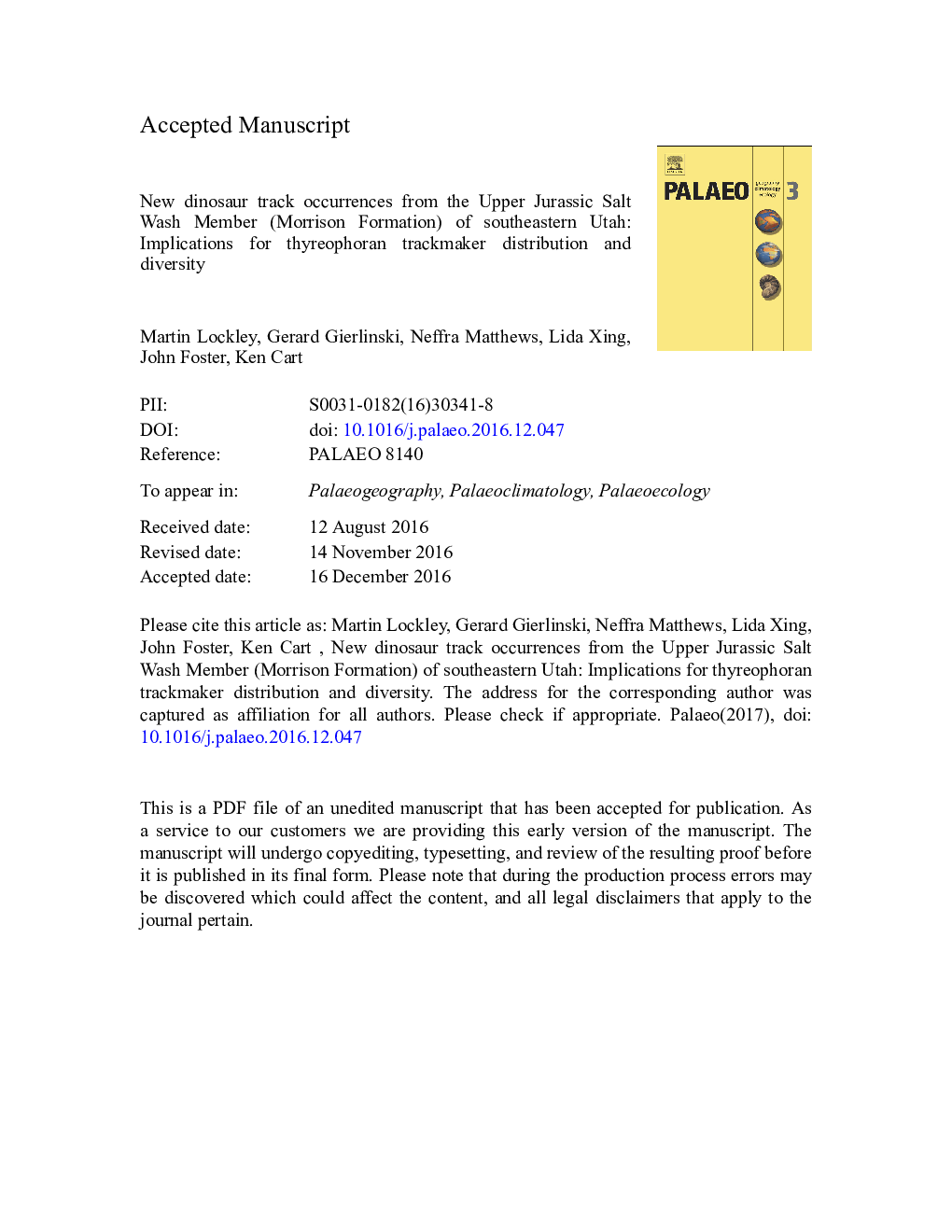| Article ID | Journal | Published Year | Pages | File Type |
|---|---|---|---|---|
| 5755915 | Palaeogeography, Palaeoclimatology, Palaeoecology | 2017 | 21 Pages |
Abstract
Recent construction at the Moab Giants dinosaur museum property ~Â 10Â miles (~Â 16Â km) north of Moab, in Grand County, Utah in 2014-2015 revealed a number of moderately well preserved dinosaur tracks from the Upper Jurassic, Salt Wash Member of the Morrison Formation. The best specimens were preserved as natural casts on the underside of massive sandstone beds, many containing dense assemblages of invertebrate traces. Here we describe several tridactyl theropod tracks, an ornithischian manus attributable to ichnogenus Stegopodus and an ornithischian pes track attributed to ichnogenus Deltapodus. Variably preserved Deltapodus have now been reported from the Tidwell, Salt Wash and Brushy Basin members of the Morrison Formation from Garfield, Grand and San Juan counties respectively, suggesting a wide distribution in space and time. The Salt Wash specimen is considered to be the most representative of Deltapodus morphologies reported from large samples in other regions, notably in Spain, Portugal western China and North Africa. Differences between Stegopodus and Deltapodus are reviewed. Deltapodus is reported from Europe and Asia as well as North America, in the Middle Jurassic through Late Cretaceous, and is often represented by abundant trackways. Stegopodus is presently reported from the Jurassic where it occurs in the Late Jurassic of North America as isolated tracks, and, with some debate, as trackways and isolated tracks from Europe. A middle Jurassic occurrence from Morocco is also reported.
Keywords
Related Topics
Physical Sciences and Engineering
Earth and Planetary Sciences
Earth-Surface Processes
Authors
Martin Lockley, Gerard Gierlinski, Neffra Matthews, Lida Xing, John Foster, Ken Cart,
